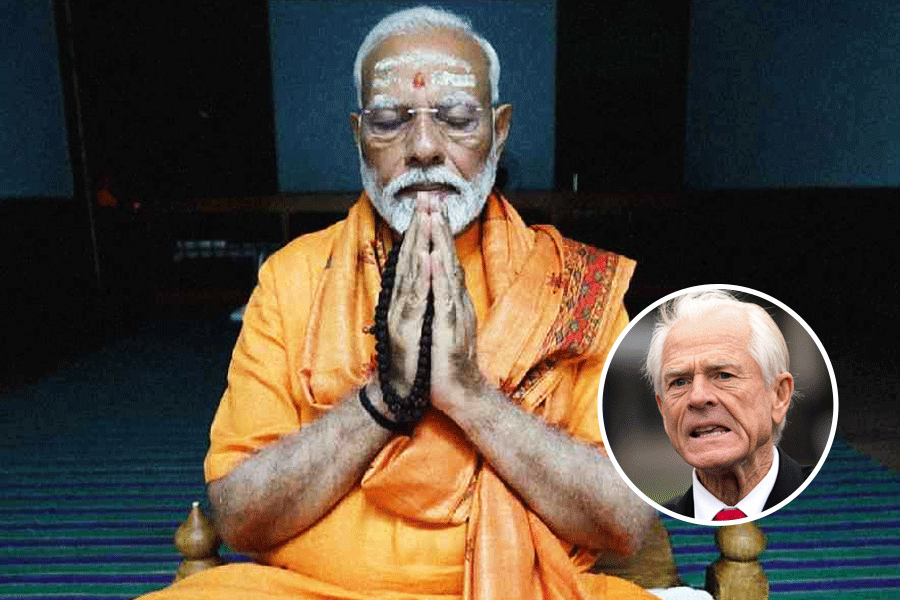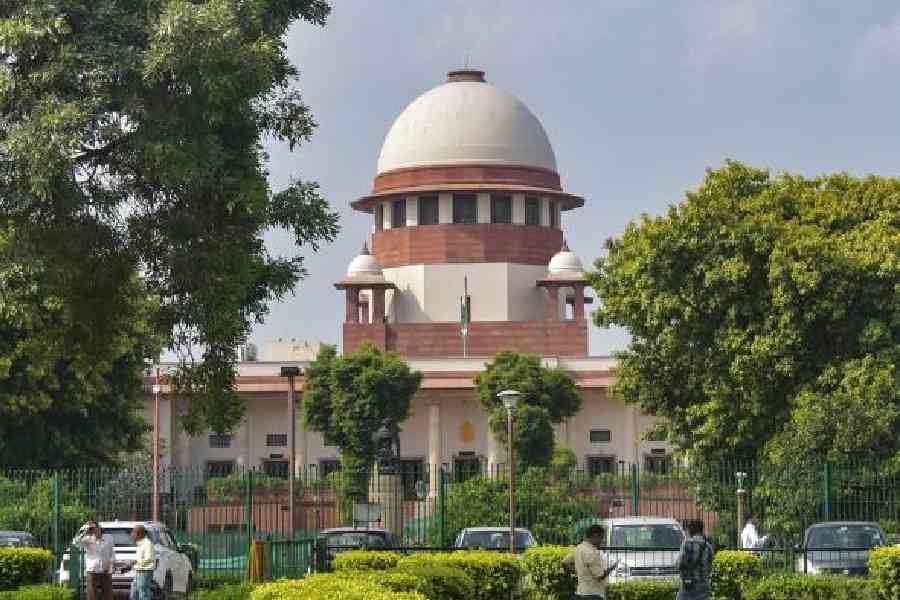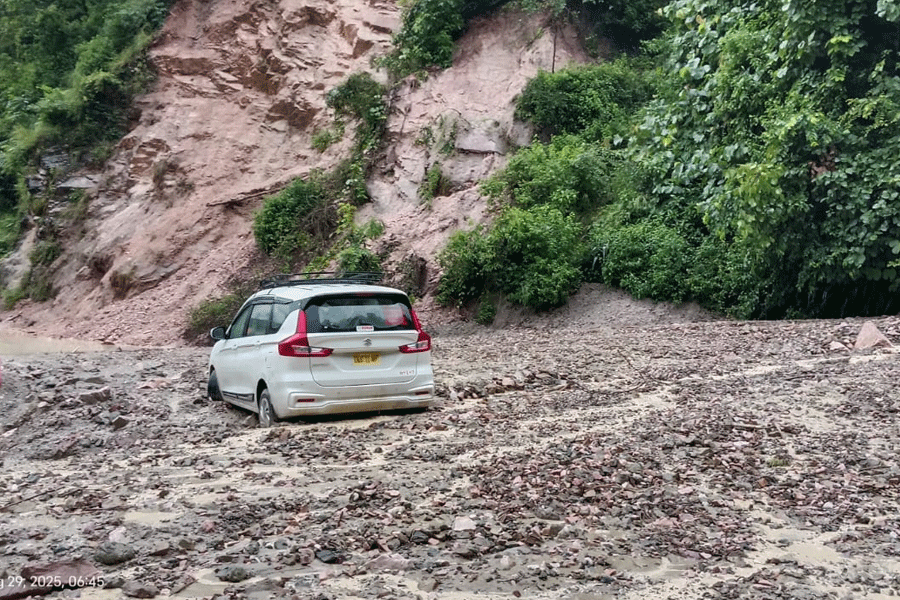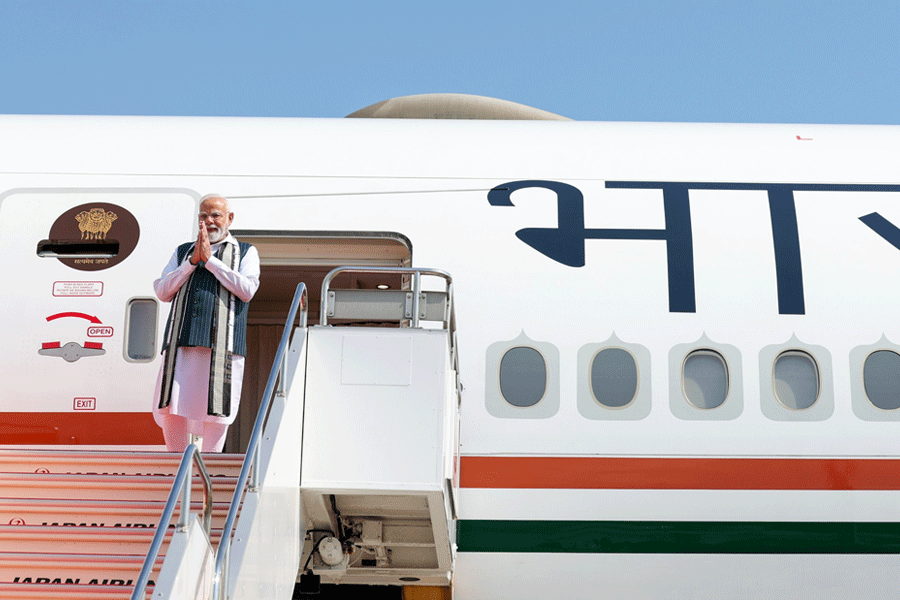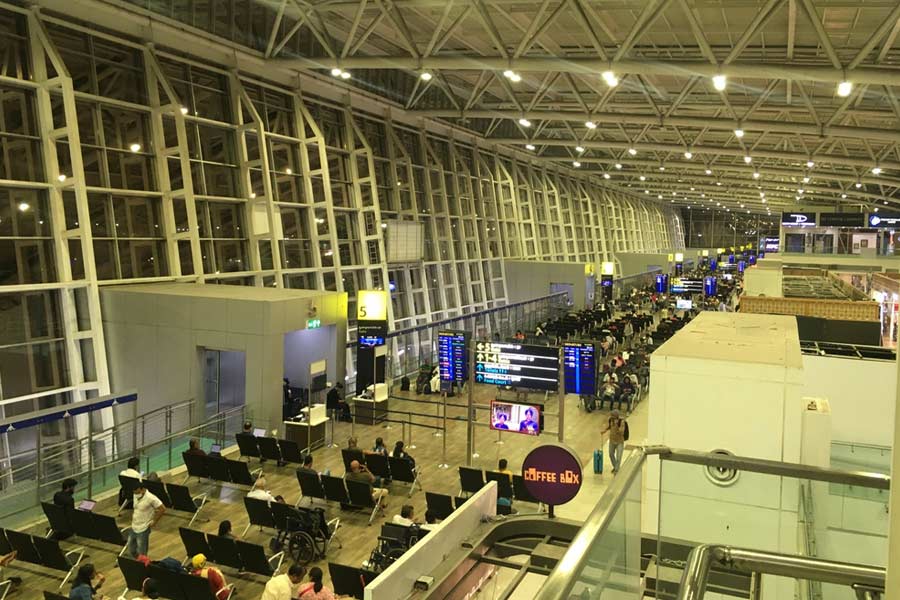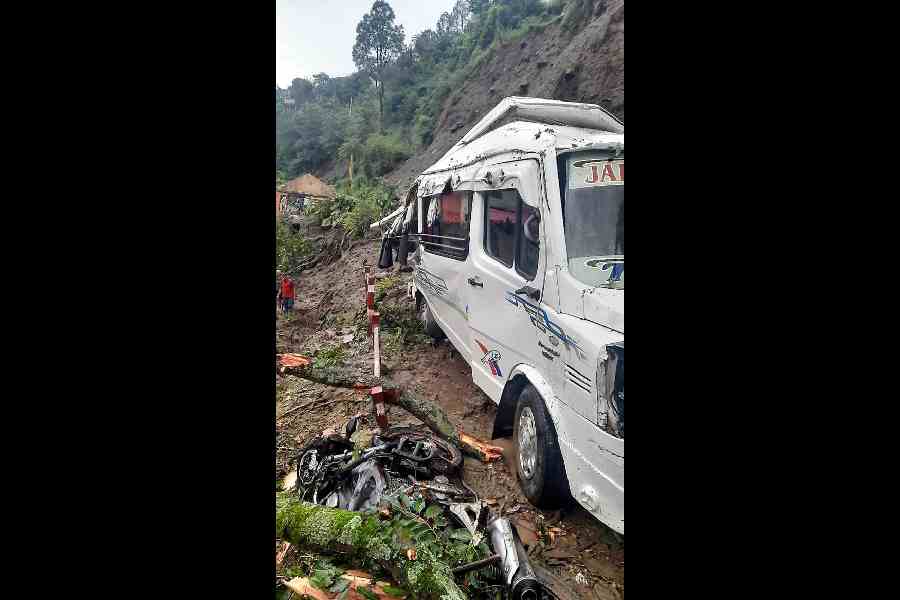 |
| Actor Kaushik Sen conducts a workshop with schoolchildren at South Point School. Picture by Anindya Shankar Ray |
A play with a message and a contest of one-act plays, that is what actor Kaushik Sen and his theatre group, Swapnasandhani, has lined up for children this December. The group plans to stage Sravan Hawa by Ujwal Chattopadhyay on December 5 at Sujata Sadan. Sponsored by the Asthma and Allergy Research Centre, the play is a campaign against air pollution.
“We are affected by the daily dose of suspended dust and toxins in the air. Research proves that children are most vulnerable to it. But many people don’t take simple precautions like keeping their carpets dust-free at home. Some parents are also against their kids using inhalers. All these issues are dealt with in the play. We have developed a fairy tale around it,” said Sen.
Sravan Hawa is a tale about two boys — Sravan, a poor small town boy, and Milindo, a rich urban kid. Both suffer from asthma. Sravan’s fairy friend also finds that she is turning dark with every passing day. Threatening them are two demons Holahol and Kolush, who live in two lung-shaped dens. It is left to medico Supawan Vaidya to defeat the demons and rescue the children.
While Sen himself acts as Supawan Vaidya and his son Ridhi (who acted in the Swapnasandhani versions of Dakghor, Banku Babur Bandhu and others) plays Sravan. Milindo is enacted by a young student from South Point School, where Sen has been taking drama classes over the past five years.
“It is wonderful to work with the young. You can’t afford to look at children today with the same condescending indulgence of grown-ups because they are so intelligent. All of them are bursting with opinions on every subject. But they are also very confused and I feel that theatre can help them a lot,” said Sen.
His training routine begins with painting sessions, followed by exercises in observation, imagination and analysis. Children are also given lists of must-see plays and films and are encouraged to put up productions themselves.
Sebanti Sarkar
To Bengal with love
 |
| Governor Gopalkrishna Gandhi takes a look at the exhibition at LSA. Picture by Anindya Shankar Ray |
Children clad in dhotis sat huddled beneath a tree as their teacher imparted lessons. Strains of Rabindrasangeet could be heard in the background. This is not Santiniketan, but its model created by students of Lakshmipat Singhania Academy (LSA) on November 22 and 23.
On the occasion of their 13th Founder’s Day, the students presented “Uttoran” that saw them turn the school into a mini Bengal. Exhibitions and cultural programmes were staged highlighting the grandeur of a lost culture. Among the guests was Governor Gopalkrishna Gandhi.
“The purpose of this carnival was to acquaint our students with their own culture. It helped them know their roots better,” said Meena Kak, the principal of LSA.
Seven hundred children, some as young as three, got together to recreate glimpses of the bygone era. Classrooms were converted into miniature artefact houses, some showcasing eminent literary figures, freedom fighters and scientists of the state.
“Bhraman” took visitors on a tour of the must-see places in Bengal. The “Saaj Poshak” room saw children dressed in traditional Bengali attire posing before an array of kantha stitch, Baluchori and batik saris.Near the staircase, a few kids enjoyed an adda session. But the most interesting part of the exhibition was its “Bioscope” section. Here, children paid their tribute to the cine idols of yesteryears by filling a classroom with their posters and that of their films. From Pramathesh Barua to Uttam Kumar, the kids did not miss any of the legends. To build the ambience, Satyajit Ray’s Goopi Gyne Bagha Byne was screened.
“We went searching for posters of old classics of the ’60s and ‘70s. It was a tedious task but finally we got them from a roadside vendor behind Jyoti cinema hall,” said Anchit Chaturvedi, a student of Class X. There was also a “Kaarigar Haat” where artisans of Bengal displayed their craft.
The cultural programme included “Taale chhande Bangla”, a compilation of various dances of the state. “Baro mashe tero parbon” was again a song-and-dance representation of the festivals of Bengal. This was followed by a fashion show on Bengali attire.
Saheli Mitra
Talks on celluloid future
CLOSE SHOT
Will both celluloid and digital tools co-exist in the world of cinema in the new age, rather than one replacing the other? This was one of the many questions raised at ‘The Future of Celluloid’, a seminar by Media Lab, a project of the department of film studies of Jadavpur University, on November 7 and 8.
Josef Lindner, the preservation officer of Academy Film Archive, Los Angeles, spoke about the challenge of film preservation in the digital age, saying ‘born digital’ films may not survive as long as the older analogue films.
Anindya Sengupta, a faculty of the Jadavpur University film studies department, raised conjectures on using cyberspace as a digital archive of films and databases on cinema.
Student presentations on ongoing databases at Media Lab included Arijit Bhattacharya’s ‘The Hindu Remarriage Act and its effect on cinema’, Shruti Ghosh’s ‘The History of Indian Cinema Database’ and Joppan George’s ‘Sound Cultures in Indian Cinema’. The first analysed the loopholes in the law. “Cinema speaks of marriage as resting on faith and the spoken word. These are ideal marriages, not to be taken up in the legal sense,” said Arijit.
In ‘Pasts and Futures of Celluloid’ British filmmaker and artist Matt Hanson discussed his project ‘Swarm of Angels’ that aims to create a global mini movie studio using open source films and by crowd sourcing.
Moinak Biswas, head of film studies, cited the example of Parineeta to question the absence of proper historical investigation of Indian cinema.
“Our aim is to find new ways of perceiving things, ultimately resulting in curricular reforms,” said Biswas.
Doel Bose,
St Xavier’s College


